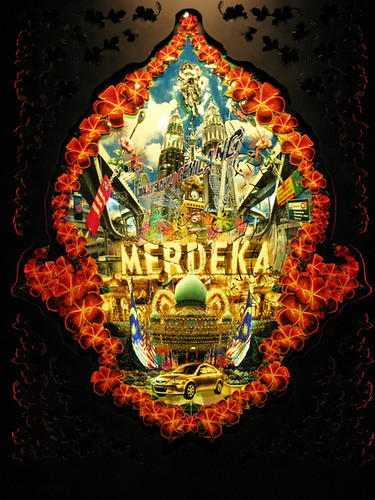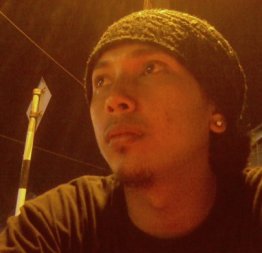Malaysia-365 days of 2008
11-May-2009-29-May-2009
Artist: Nor Azizan Rahman Paiman
Malaysia-365 days of 2008 is a compilation and documentation of the year 2008, as seen through the analytical mind of the important social/political Malaysian artist Paiman (Nor Azizan Rahman Paiman). Born in Malacca in 1970, Paiman received his art education in both Malaysia and the United Kingdom and attained a MA in Fine Arts from the Manchester Metropolitan University in 2001. Since 1991 he has exhibited widely both in Malaysia and on an international arena, including the '1st Fukuoka Asian Art Trienniale 1999’, Japan, and at the ‘Asia-Pacific Triennial of Contemporary Art (APT5)’ ,Queensland,Australia in 2007. A selection of Paiman’s distinctive works can also be seen in the collection of the Queensland Art Gallery (QAG) in Australia.
Over the years Paiman has made a name for himself with his unique imaginary, caricatures which are juxtaposed against statements by important Malaysian figures in a witty commentary on Malaysian life. He has often said that he considers himself a ‘backdated reporter’ and that ‘everything changes in the world, and more often than not there are issues or incidents that we have forgotten or ignored’. In this set of works he spent the whole of 2008 going through all the major papers of the country on a daily basis in an arduous task to extract one statement that best reflected the sentiment that day. Armed with this statement, he stenciled the quote onto the corresponding page of an Islamic diary, and then rendered his wonderful fantastical figures over them, ending up over the course of a year with a diary filled with the ‘essence’ of 2008.
The artist aptly says:
"MALAYSIA 365 days of 2008 is a fragmented arrangement of a particular moment in time as the country came face to face with many difficult situations. I played my part as a Malaysian to record everyday life in a creative way. Provocation has everything to do with perception. Perception is controlled by a world view and world view is controlled by a counter situation."
Address:-
No. 8 Jalan Scott, Brickfields
50470 Kuala Lumpur, Malaysia
Ofc :+ 603-22601106/7
Fax: +603-22601107
Opening Hours: Mon-Fri 12pm-7pm
Sat:10am-5pm
Sun : By Appointment
Read more...













